HighPoint RocketStor RS6114V 4-Bay USB-C RAID Enclosure Review
by Ganesh T S on October 19, 2017 8:00 AM ESTPerformance with Hard Drives
The benchmarks processed in the previous section were also run with four WD Red 10TB hard drives in the unit. Running the robocopy benchmarks segment of the AnandTech DAS Suite with hard drives attached to the storage bridge gives us the following performance numbers. The graphs show that the storage bridge is able to sustain around 340 MBps for real-world workloads when recently launched hard drives are used. The RAID configuration and parameters, as well as the workload characteristics, deeply influence the numbers. The results below are with the RAID volumes configured with the default parameters.
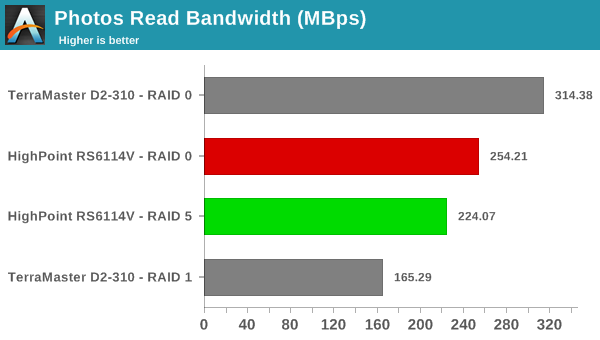
The PCMark 8 storage bench is not particularly hard drive-friendly, with the performance numbers coming in at a fraction of what one obtains with SSDs.
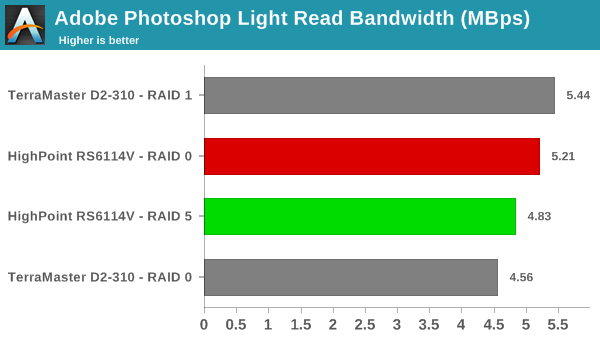
CrystalDiskMark workloads show numbers that are slightly better than what we saw in our robocopy tests. Small workload sizes (like the 8GB used below) can greatly benefit from caching, since the enclosure uses software RAID. The real use case numbers are a better reflection of performance under sustained loading.
| Storage Bridge Benchmarks - CrystalDiskMark (with HDDs) | ||
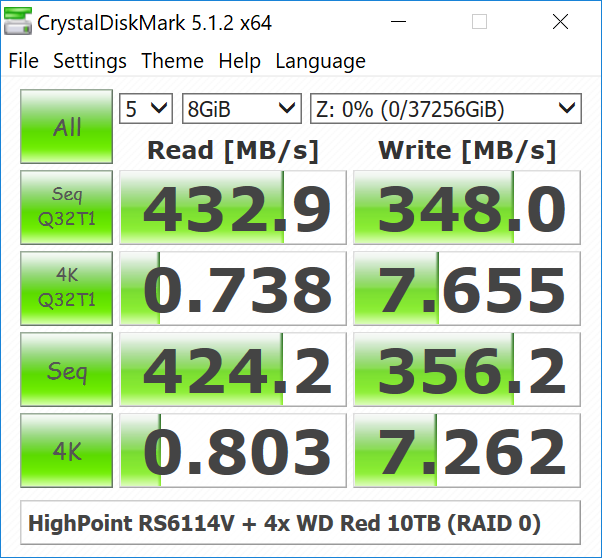 |
 |
|
The active cooling ensures that the hard drives remain cool even when subject to large amounts of traffic. There is no performance consistency issue, though the test immediately reveals the slow RAID 5 write performance when hard drives are used.
| Storage Enclosure Thermal Characteristics | ||
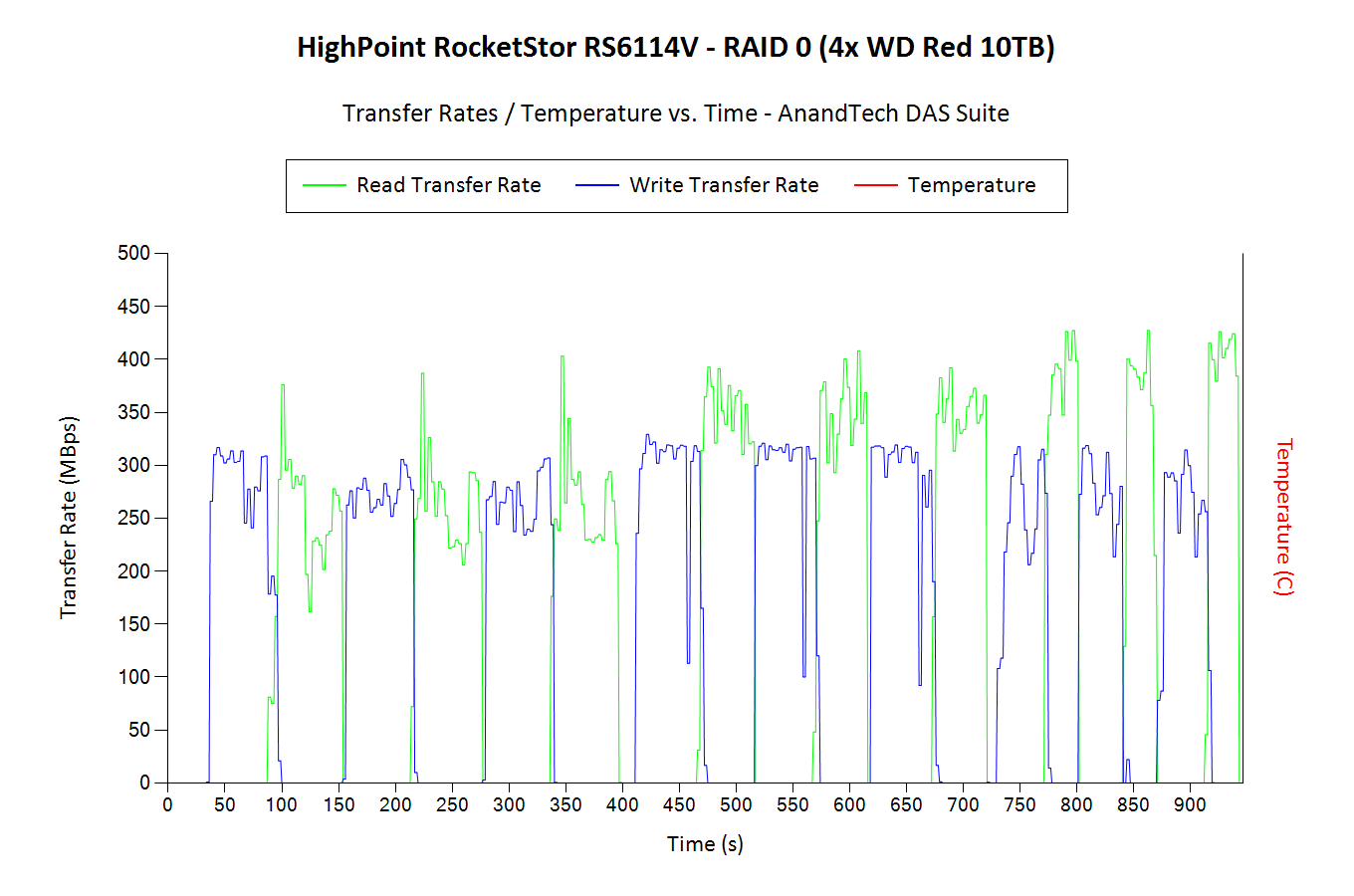 |
 |
|
Hard drives tend to consume more power compared to SSDs, and that is evident in the power numbers for the CrystalDiskMark workloads below. The unit idles at around 29 W, while the maximum power draw we observed was around 36 W.
| Power Consumption - CrystalDiskMark Workloads | ||
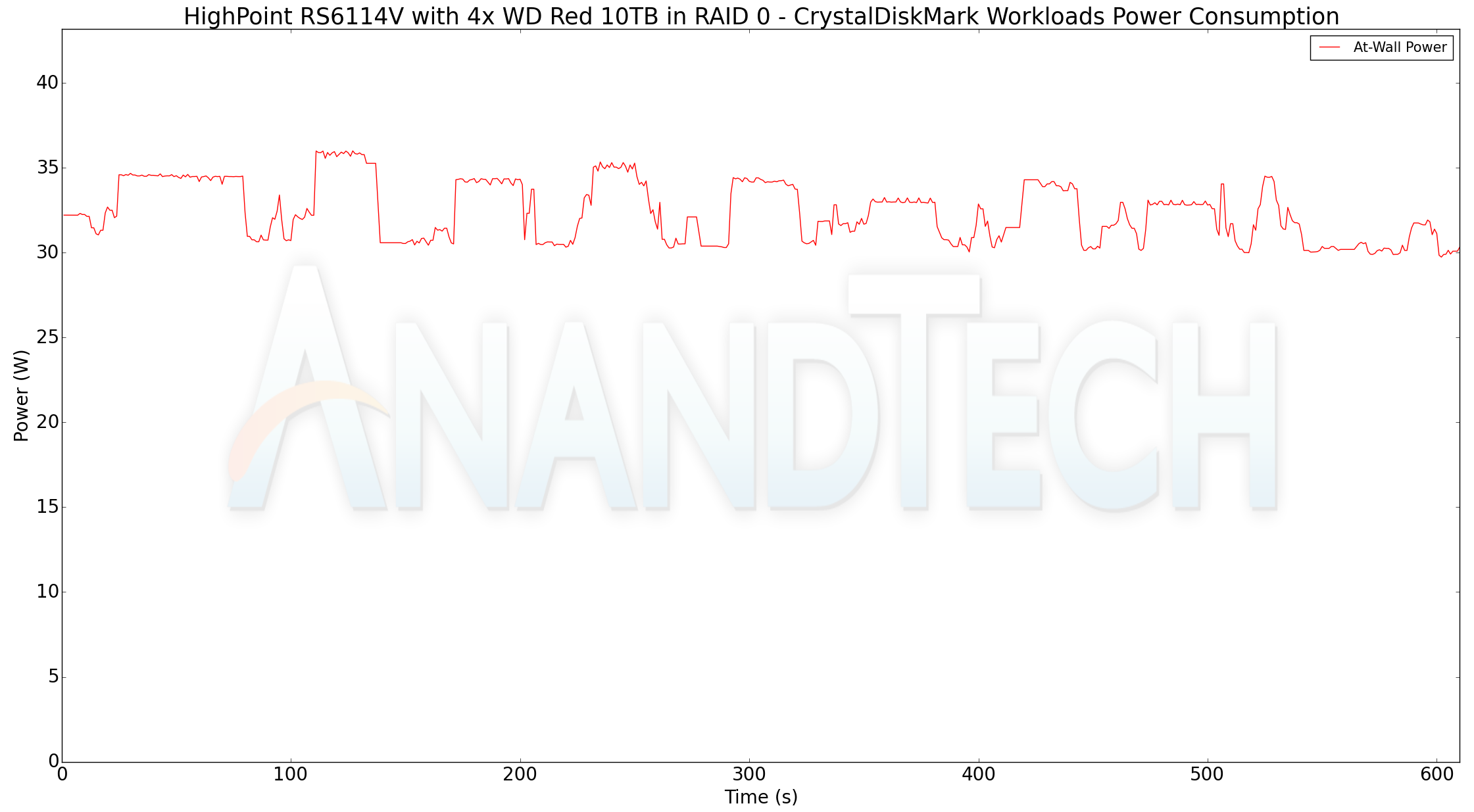 |
 |
|










9 Comments
View All Comments
MajGenRelativity - Thursday, October 19, 2017 - link
I enjoyed the well written article. I'm not the right person for this, but it's always good to keep up to date on different fieldsgchernis - Thursday, October 19, 2017 - link
I suspect the Xilinx chip will get warmer only when in RAID5. If so, they are using it to compute parity.ddriver - Friday, October 20, 2017 - link
Parity calculation is actually extremely simple and lightweight. Even for SSDs it will use milliwatts of power.gchernis - Thursday, October 19, 2017 - link
It's very hard to see temperatures on the Storage Enclosure Thermal Characteristics graphs... Great review, thank you Ganesh!HStewart - Friday, October 20, 2017 - link
I think this product will be really nice if it also supported TB3 - since it already supports USB C, it should be easy to support to TB3 especially now that Intel open it up.MajGenRelativity - Friday, October 20, 2017 - link
Thunderbolt 3 requires additional hardware beyond the USB C specification. While Intel opening the specification up makes it cheaper, it still is not free.Vidmo - Saturday, October 21, 2017 - link
Ganesh,Why do your performance numbers differ so much from this review?
https://www.servethehome.com/highpoint-rocketstor-...
They were seeing much higher numbers with CrystalDiskMark than you saw, both in RAID 0 and RAID 5.
ganeshts - Wednesday, October 25, 2017 - link
Their CDM testing parameters are different. We consistently use 5 passes with a 8GB working set. They appear to be using 3 passes with a 1GB working set. The numbers also heavily depend on the drives used in the enclosure - you can see the difference between the SSDs and the HDDs even in our review. Lastly, the enclosure relies on host system caching to some extent, and that might skew results for small working sets.galfert - Sunday, November 12, 2017 - link
I've been looking for a Thunderbolt 3 enclosure that supports NVMe and Trim. Does not seem to exist. I guess I'll keep waiting. Gotta be any day now already. Sheez!